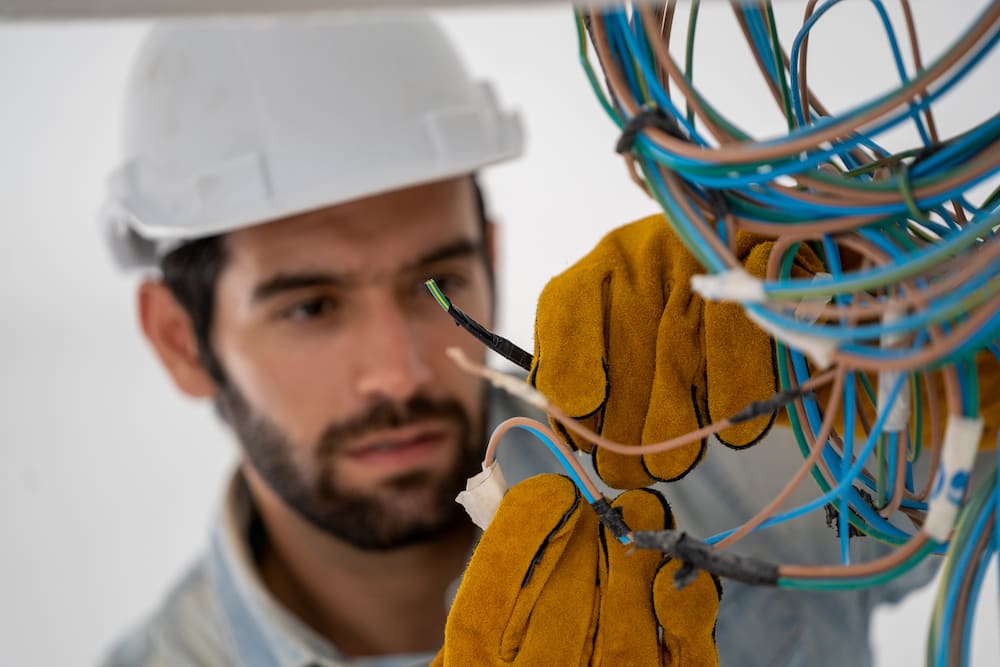- Published 8 Mar 2024
- Last Modified 8 Mar 2024
- 5 min
Exploring the World of Cable Joints: Types and Applications
Explore the role of cable joints in reliable connections for power and data. Learn more about the different types and applications of cable joints.

In industries ranging from electrical and telecommunications to construction, the integrity of cable connections is paramount. Cable joints are critical components in this infrastructure, ensuring reliable and efficient connections that support the flow of power and data. These essential elements facilitate the seamless operation of networks, powering everything from urban lighting to broadband services.
Cable jointing can be categorised based on their functionality, the types of cables they connect, and the specific applications they serve:

1. Straight-Through Joints
Straight-through joints are designed to connect two lengths of cable with the same diameter and type, ensuring a seamless and continuous electrical path. These joints are critical in applications where cable lengths need to be extended without compromising the integrity or performance of the cable system. They find extensive use in power distribution networks, telecommunications, and in both underground and overhead cabling systems.
2. Branch Joints
Branch joints are utilised primarily in power and telecommunications networks to create diverging points from a main cable. This type of joint allows for the distribution of electrical power or data signals into multiple pathways, facilitating network expansion or the provision of services to new areas. Branch joints are particularly useful in urban infrastructure, where they help distribute power from main cables to individual buildings or street lighting. They are also integral in data centres and communication networks for distributing data lines across different sections of the facility.
3. Repair Joints
Repair joints are crucial for restoring the functionality of damaged cables without the need for complete replacement. They are often used in situations where cables have been accidentally cut or damaged due to environmental factors like corrosion or abrasion. In the utility sector, repair joints are essential for maintaining uninterrupted power supply and communication services following cable damage. In industrial settings, these joints are used to quickly fix critical machinery cables, minimising downtime and maintaining productivity.
4. Transition Joints
Transition joints are designed to connect cables of different types or sizes, ensuring compatibility and continuity in mixed-cable environments. These joints are particularly important in scenarios where an existing network is upgraded or expanded with new cable types. For example, in the renovation of older buildings, transition joints are used to connect new, modern cabling to existing, older cable systems. They are also used in industrial applications where different types of machinery require varied cable specifications.
5. Resin-Cast Joints
Resin-cast joints are known for their robustness and are widely used in harsh environmental conditions. These joints encase the cable connections in a solid resin block, providing excellent insulation and protection against moisture, chemicals, and physical impacts. This makes them ideal for underground and outdoor applications, such as in subterranean power networks or areas exposed to harsh weather conditions. In renewable energy installations like wind farms or solar arrays, resin-cast joints provide reliable connections that withstand environmental stress.
6. Heat-Shrink Joints
Heat-shrink joints are popular due to their ease of installation and reliable sealing capability. They are extensively used in electrical installations where a moisture-resistant, tight seal is necessary. The heat-shrink material tightly conforms to the cables and joints, creating a protective barrier against water ingress and contaminants. This feature is particularly beneficial in outdoor electrical installations, like overhead power lines, and in industrial settings where exposure to liquids and gases is common.
Considerations to Note When Selecting Cable Joints

When selecting cable joints for any project, several key considerations come into play to ensure the reliability, efficiency, and safety of your cable connections:
- Cable Type and Specifications: Match the type of cable joint to the type of cables being connected, taking into account the conductor material, insulation type, and size. The joint should be compatible with the electrical and physical characteristics of the cable.
- Application Environment: Consider the environment where the joint will be installed. Outdoor, underground, or industrial environments may require joints with additional protection against moisture, chemicals, temperature extremes, and mechanical stress.
- Electrical Requirements: The joint must meet the electrical demands of the application, including voltage rating and current carrying capacity. It should also preserve the cable system's electrical integrity, minimising signal loss and electrical interference.
- Installation and Accessibility: Evaluate the ease of installation and future accessibility for inspections or maintenance. Some joints are designed for quick, tool-free installation, while others might require specialised tools or techniques.
- Durability and Longevity: Consider the joint's expected lifespan and its resistance to environmental factors that could lead to degradation over time. A durable joint minimises the need for frequent replacements or repairs.
- Regulatory Compliance: Ensure the cable joint meets local and international standards and regulations for safety and performance. Compliance with standards guarantees the joint's reliability and suitability for the intended application.
- Future Expansion: If network expansion is anticipated, consider selecting joints that can accommodate additional connections or are easily modified to suit future needs.
- Cost-Effectiveness: While not the only factor, the cost of the joint relative to its performance and durability should be considered. An initially more expensive joint might offer better long-term value through enhanced reliability and reduced maintenance.
By carefully considering these aspects, you can select the most appropriate cable joint for your specific needs, ensuring a secure, reliable, and efficient cable network.
Popular Cable Joint Brands
HellermannTyton
HellermannTyton offers a comprehensive range of cable joints suitable for a variety of applications, ensuring reliable and durable connections.
nVent ERICO
nVent ERICO specialises in providing graphite cable joint connector blocks designed for high-performance and secure connections in demanding environments.